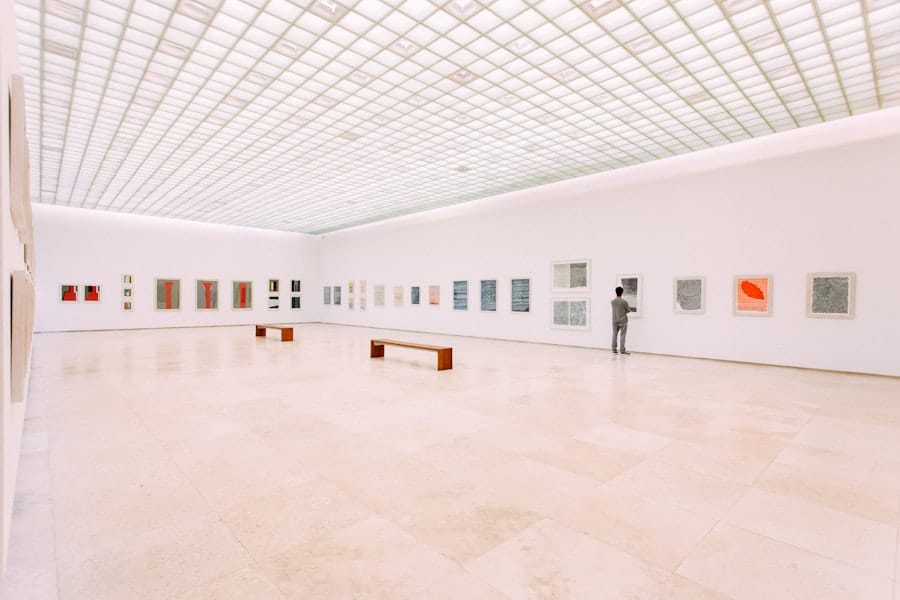In recent years, the concept of virtual worlds has gained significant traction, particularly in the context of arts access. Virtual worlds, often defined as computer-generated environments where users can interact with each other and the surroundings, have opened new avenues for artistic expression and engagement. These digital spaces allow individuals to experience art in ways that transcend geographical, social, and economic barriers.
As traditional art venues often require physical presence and financial investment, virtual worlds present an alternative that democratizes access to the arts. This shift is particularly crucial for marginalized communities, who have historically faced systemic barriers to participation in cultural activities. The advent of virtual reality (VR), augmented reality (AR), and immersive online platforms has transformed how art is created, shared, and experienced.
Artists can now showcase their work in digital galleries, while audiences can explore these spaces from the comfort of their homes. This evolution not only enhances accessibility but also fosters a sense of community among diverse groups of people. By leveraging technology, virtual worlds can serve as a bridge, connecting marginalized individuals with artistic resources and opportunities that were previously out of reach.
The intersection of technology and art in these environments holds the potential to reshape cultural landscapes and empower communities through creative expression.
Key Takeaways
- Virtual worlds offer new opportunities for marginalized communities to access and engage with the arts.
- Marginalization can significantly impact access to the arts, leading to limited opportunities for expression and cultural participation.
- Virtual worlds can serve as a powerful tool for rebuilding arts access by providing a platform for creativity and expression.
- Successful case studies demonstrate the potential of virtual arts initiatives to empower marginalized communities and revitalize cultural engagement.
- Overcoming challenges in implementing virtual arts initiatives requires addressing issues such as access to technology and digital literacy, as well as cultural and language barriers.
The Impact of Marginalization on Arts Access
Marginalization manifests in various forms, including socioeconomic status, race, ethnicity, disability, and geographic location. Each of these factors can significantly hinder access to the arts, creating a landscape where only a select few can engage with cultural experiences. For instance, individuals from low-income backgrounds may lack the financial means to attend theater performances, art exhibitions, or music concerts.
Similarly, those living in rural areas may find themselves isolated from urban cultural hubs, leading to a disconnect from artistic movements and opportunities. This exclusion not only stifles individual creativity but also deprives society of diverse perspectives that enrich the cultural tapestry. Moreover, systemic barriers such as discrimination and lack of representation further exacerbate the challenges faced by marginalized communities in accessing the arts.
For example, artists from underrepresented backgrounds often struggle to find platforms that showcase their work or receive funding for their projects. This marginalization can lead to a cycle where certain voices remain unheard, perpetuating stereotypes and limiting the richness of artistic expression. The impact of these barriers extends beyond individual artists; it affects entire communities that could benefit from the transformative power of the arts.
As a result, addressing these inequities is essential for fostering a more inclusive cultural landscape.
Virtual Worlds as a Tool for Rebuilding Arts Access
Virtual worlds offer innovative solutions to the challenges posed by marginalization in arts access. By creating immersive environments where users can interact with art and each other, these digital spaces can effectively dismantle traditional barriers. For instance, virtual galleries allow artists from marginalized backgrounds to exhibit their work without the constraints of physical space or financial limitations.
This democratization of access enables a broader range of voices to be heard and appreciated, fostering a more inclusive artistic community. Additionally, virtual worlds can facilitate collaboration among artists and audiences across geographical boundaries. Through online platforms, individuals from different regions can come together to share ideas, collaborate on projects, and participate in discussions about art and culture.
This connectivity not only enriches the artistic experience but also cultivates a sense of belonging among participants. Furthermore, virtual worlds can host workshops, performances, and interactive events that engage audiences in meaningful ways, allowing them to actively participate in the creative process rather than being passive consumers of art.
Case Studies of Successful Virtual Arts Initiatives in Marginalized Areas
Several initiatives have successfully harnessed the power of virtual worlds to enhance arts access for marginalized communities. One notable example is the “Virtual Reality Art Museum” project launched in collaboration with local artists in underserved neighborhoods. This initiative created an online platform where artists could showcase their work in a fully immersive 3D environment.
By providing free access to this virtual museum, the project attracted visitors from diverse backgrounds who may not have had the opportunity to engage with art otherwise. The initiative not only elevated local artists but also fostered community engagement through virtual events and discussions. Another compelling case is the “Digital Storytelling Project,” which focused on empowering youth from marginalized backgrounds to share their narratives through multimedia art forms.
Participants were trained in digital storytelling techniques and provided with tools to create their own short films and animations. The project culminated in a virtual exhibition where these stories were showcased to a global audience.
Overcoming Challenges in Implementing Virtual Arts Initiatives
While the potential of virtual arts initiatives is vast, several challenges must be addressed to ensure their success. One significant hurdle is the digital divide that persists in many marginalized communities. Access to reliable internet connections and modern devices is not universal; thus, some individuals may be excluded from participating in virtual arts programs.
To combat this issue, organizations must prioritize equitable access by providing resources such as free internet access points or loaner devices for participants. Another challenge lies in ensuring that virtual platforms are user-friendly and accessible to individuals with varying levels of technological proficiency.
To mitigate this barrier, it is essential to offer comprehensive training sessions that empower users with the skills needed to navigate virtual environments confidently. Additionally, incorporating accessibility features—such as screen readers or closed captioning—can further enhance inclusivity for individuals with disabilities.
The Role of Technology in Bridging the Gap in Arts Access
Technology plays a pivotal role in bridging the gap in arts access for marginalized communities. Beyond simply providing a platform for artistic expression, technological advancements enable innovative approaches to engagement and participation. For instance, augmented reality applications allow users to experience art in their own environments by overlaying digital content onto physical spaces.
This interactive approach not only enhances accessibility but also encourages individuals to explore their creativity within familiar contexts. Moreover, social media platforms have become powerful tools for artists seeking to reach wider audiences without traditional gatekeeping mechanisms. Artists can share their work directly with followers, engage with fans through live streams or Q&A sessions, and collaborate with other creators across the globe.
This democratization of visibility empowers marginalized artists to build their brands and connect with supporters who resonate with their narratives. As technology continues to evolve, its potential to reshape arts access will only expand further.
The Future of Virtual Arts Initiatives in Marginalized Areas
Looking ahead, the future of virtual arts initiatives in marginalized areas appears promising yet requires ongoing commitment and innovation. As technology continues to advance, new opportunities will emerge for artists and communities alike. For example, developments in artificial intelligence could lead to personalized art experiences tailored to individual preferences or learning styles.
Such innovations could enhance engagement and foster deeper connections between artists and audiences. Furthermore, as more organizations recognize the importance of inclusivity in the arts, collaborations between tech companies and cultural institutions are likely to increase. These partnerships can lead to the creation of specialized platforms designed specifically for marginalized communities, ensuring that their unique needs are met.
Additionally, ongoing research into best practices for virtual arts initiatives will be crucial for understanding how to effectively engage diverse populations and measure impact.
The Potential of Virtual Worlds in Empowering Marginalized Communities through Arts Access
The intersection of virtual worlds and arts access presents an unprecedented opportunity for empowering marginalized communities through creative expression. By dismantling traditional barriers and fostering inclusivity, these digital environments can serve as catalysts for change within cultural landscapes. As we continue to explore the potential of technology in enhancing arts access, it is essential to prioritize equity and representation at every stage of development.
Through collaborative efforts among artists, technologists, and community organizations, we can create vibrant virtual spaces that celebrate diversity and amplify underrepresented voices. The journey toward equitable arts access is ongoing; however, with commitment and innovation, we can harness the power of virtual worlds to transform lives and enrich our collective cultural heritage.
In addition to exploring how virtual worlds are rebuilding access to arts in marginalized areas, readers may also be interested in learning about the best antivirus software in 2023. This article from Enicomp provides valuable insights into the top antivirus programs available to protect your devices from cyber threats. By ensuring the security of your technology, you can continue to engage with virtual worlds and other online platforms safely. Check out the article here.
FAQs
What are virtual worlds?
Virtual worlds are computer-based simulated environments where users can interact with each other and the environment through avatars. These environments can be designed to resemble real-world locations or be entirely fantastical.
How are virtual worlds rebuilding access to arts in marginalized areas?
Virtual worlds are providing access to arts in marginalized areas by allowing individuals to participate in art exhibitions, performances, and cultural events without the limitations of physical location or financial resources. This enables individuals in marginalized areas to engage with and create art in ways that were previously inaccessible to them.
What are some examples of virtual worlds being used to rebuild access to arts in marginalized areas?
Some examples of virtual worlds being used to rebuild access to arts in marginalized areas include virtual art galleries, virtual music concerts, and virtual theater performances. These platforms allow individuals from marginalized areas to showcase their artistic talents and engage with a global audience.
What are the benefits of using virtual worlds to rebuild access to arts in marginalized areas?
The benefits of using virtual worlds to rebuild access to arts in marginalized areas include increased inclusivity, expanded opportunities for artistic expression, and the ability to connect with a global audience. Additionally, virtual worlds can provide a safe and accessible space for individuals to explore and engage with art without the barriers of physical location or financial constraints.
What are some challenges associated with using virtual worlds to rebuild access to arts in marginalized areas?
Some challenges associated with using virtual worlds to rebuild access to arts in marginalized areas include the need for access to technology and internet connectivity, potential digital divides, and the limitations of virtual experiences compared to in-person interactions. Additionally, there may be concerns about the preservation of cultural authenticity and the potential for virtual experiences to replace physical arts and cultural spaces.



